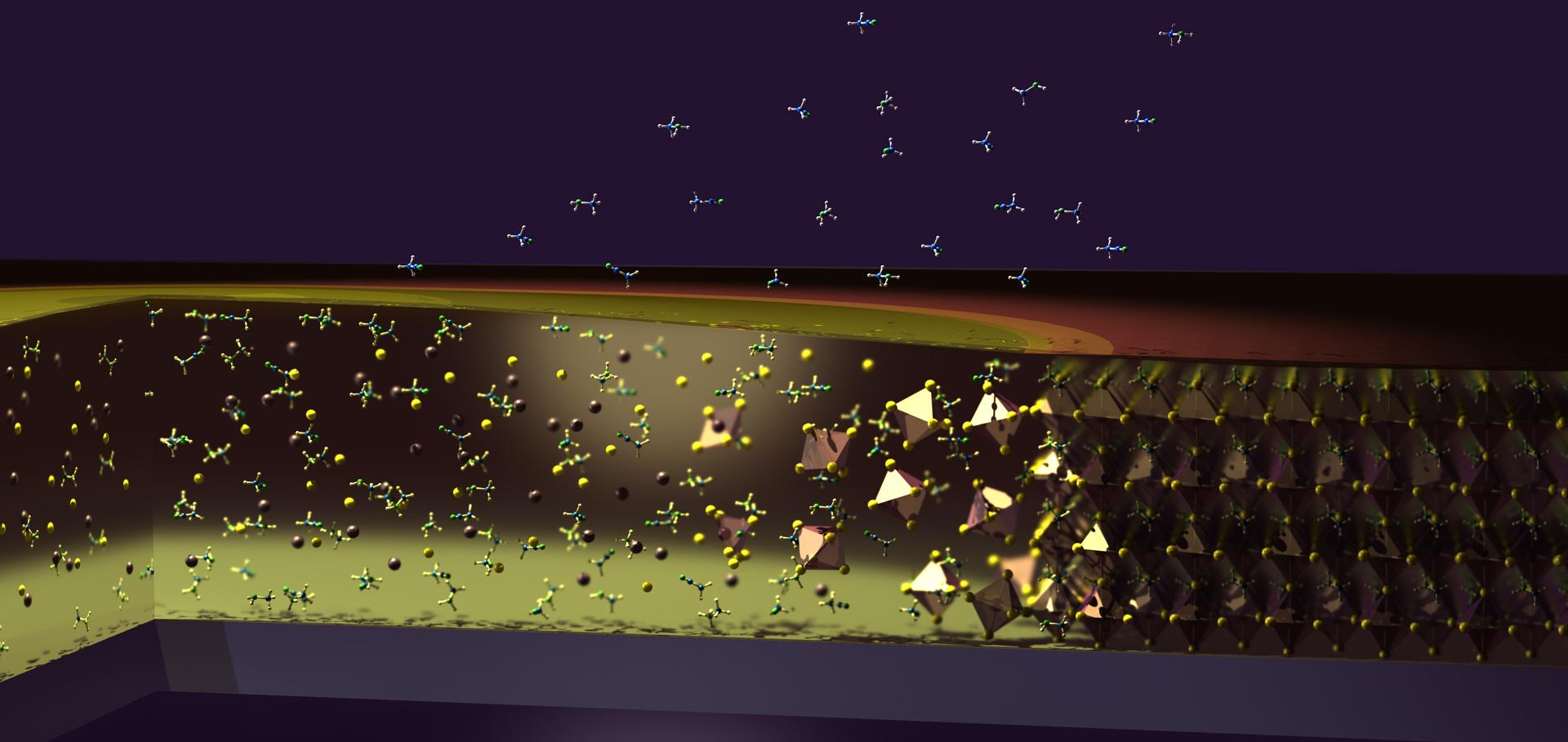Bandgap-universal passivation enables stable perovskite solar cells with low photovoltage loss
Abstract:
The efficiency and longevity of metal-halide perovskite solar cells are typically dictated by nonradiative defect-mediated charge recombination. In this work, we demonstrate a vapor-based amino-silane passivation that reduces photovoltage deficits to around 100 millivolts (>90% of the thermodynamic limit) in perovskite solar cells of bandgaps between 1.6 and 1.8 electron volts, which is crucial for tandem applications. A primary-, secondary-, or tertiary-amino–silane alone negatively or barely affected perovskite crystallinity and charge transport, but amino-silanes that incorporate primary and secondary amines yield up to a 60-fold increase in photoluminescence quantum yield and preserve long-range conduction. Amino-silane–treated devices retained 95% power conversion efficiency for more than 1500 hours under full-spectrum sunlight at 85°C and open-circuit conditions in ambient air with a relative humidity of 50 to 60%.


